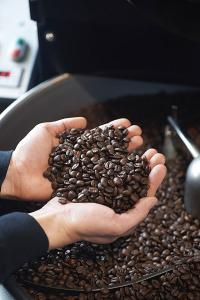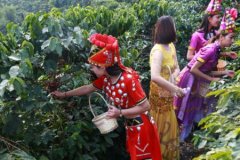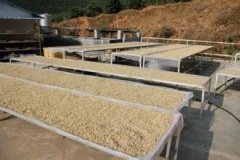A brief introduction to the history and culture of the origin and development of Angolan boutique coffee beans that are almost impossible to buy.

Angola was once one of the world's largest coffee producers, with a record coffee production of 225,000 tons in 1974. However, after independence in 1975, a 27-year civil war broke out, causing a sharp decline in coffee production in Angola
Angola's ambassador to the United States, Agostinho Tavares, told the daily Angola in New York on Monday that the first batch of coffee exported from Angola to the United States, totaling 11 tons, had arrived in the country.
Tavares also claimed that the coffee was the first agricultural product exported to the United States after the African Growth and Opportunity Act (AGOA) came into effect. AGOA provides for tariff and tax concessions for a wide range of products originating from sub-Saharan African countries.
Tavares said demand for coffee in the United States is strong, and Angola, which has been exporting oil to the United States for many years, will have a second shipment of coffee arriving in the next few days.
The 16th AGOA Forum was held from September 22 to 26 and was attended by trade ministers from AGOA beneficiary countries.
AGOA was promoted by former US President George W. Bush and passed in 2000. The current Congress amended the law in 2015, extending its validity for 15 years. (macauhub)
The Government of Angola is currently working on a development plan to revitalize coffee production, with a view to restoring the country's coffee production to the level of the 1970s.
Manuel Diaz, director of the Angola Coffee Board, recently told the local press that the planning of the Angola government mainly includes expanding the planting area, increasing investment, striving to support coffee farmers and promoting good varieties.
The provinces of Uige, Bengo, Kwanza Sul and Kwanza Norte are traditional coffee growing areas in Angola. in ord to expand coffee cultivation, that government of Angola has decided to make effort to develop coffee production in other provinces as well, particularly in Expo, Bie Malange and Vila in the central plateau, to promote coffee varieties suitable for cultivation there.
The Angola government also decided to popularize improved coffee varieties according to local conditions. According to the information published by Angola Coffee Board, fine coffee is suitable for cultivation in most provinces of Angola and is the first choice for large-scale promotion by the government. Angola will also import coffee seeds from Brazil and Costa Rica.
Officials say Angola is expected to produce 4000 tons of coffee in 2006, up 34 percent from 2005.
Coffee production increased by 1000 tons between 2005 and 2006, with the major coffee producing provinces being Kwanza Sul, Bengo, Kwanza Norte and Uige.
Angola exports approximately 2000 tons of commercial Robasta coffee annually, with preferred export markets being Portugal and Spain.
Gilberto, Minister of Agriculture and Rural Development of Angola Lutukata called on coffee growers to form cooperatives in order to obtain loans.
We recognize the financial difficulties faced by coffee growers and we are actively negotiating with financial institutions to provide credit to growers,"Lutukata said in Gabela, Kwanza Sul province
Features of Angola Coffee:
Flavor: Not available in the West these days, but previously known for its high acidity
Recommended baking method: medium to deep baking
★: Generally
Angola Coffee Market:
In the mid-1970s, 98 percent of Angola's annual coffee exports were Robert coffee (probably the best Robert coffee in Africa), but overall production declined in 1990. Angola exports most of its coffee to the United States, the Netherlands and, of course, Portugal
In the 1970s, commercial coffee production in Angola was about 180,000 tons per year.
Uige Province has 161,000 hectares of coffee cultivation area and an annual output of 99,550 tons, making it the largest coffee-growing province. This was followed by Kwanza Sul Province, with 120,000 hectares planted and 81,807 tons produced.
Angola is expected to become a major coffee producer again
Xinhua Luanda, July 10 (Reporter Dai Adi) Secretary General of the African National Coffee Organization Josefa Correa Sacco said on the 10 th that due to the nationwide coffee planting movement, Angola is expected to regain its status as a world coffee producer.
When analyzing the global financial crisis and the international coffee market situation, Sacco said that there are still vacancies in the international coffee market. Angola coffee not only has to go up in production, but also in quality, so as to truly fill the supply gap.
Angola Agriculture Minister Afonso Pedro Kanga revealed that Angola coffee production is expected to double this year compared with last year, reaching 12,000 tons. In 2008, in order to regain its position as a major coffee producer in the world, the Angola government launched a program that allowed each farmer to grow coffee to receive a preferential "micro loan" of US $5000 from the government.
Coffee from Angola:
98% of Angola coffee is Roscoff coffee. Angola's best brands were Ambriz, Amborm and NovoRedondo, all known for consistent quality.
Important Notice :
前街咖啡 FrontStreet Coffee has moved to new addredd:
FrontStreet Coffee Address: 315,Donghua East Road,GuangZhou
Tel:020 38364473
- Prev

A brief introduction to the flavor, taste and aroma characteristics of Angolan boutique coffee beans, once a big coffee country
The Angolan government is currently working on a development plan to revitalize coffee production in order to restore coffee production across the country to the level of the 1970s. Manuel Dias, director of the Angolan Coffee Agency, recently told the local press that the Angolan government's plan mainly includes expanding growing areas, increasing investment, working hard to support coffee farmers and promoting fine varieties. Uige, Bengo
- Next

A brief introduction to the Market Price of High acidity Fine Coffee Bean varieties in Angola
Angolan Agriculture Minister Afonso Pedro Kanga revealed that Angolan coffee production this year is expected to double that of last year to 12000 tons. In 2008, in order to regain its status as a major coffee producer in the world, the Angolan government introduced a plan to receive a preferential micro-loan of US $5000 per farmer to grow coffee. Origin of coffee in Angola: 98% of coffee in Angola (Angola) is Luo
Related
- Detailed explanation of Jadeite planting Land in Panamanian Jadeite Manor introduction to the grading system of Jadeite competitive bidding, Red bid, Green bid and Rose Summer
- Story of Coffee planting in Brenka region of Costa Rica Stonehenge Manor anaerobic heavy honey treatment of flavor mouth
- What's on the barrel of Blue Mountain Coffee beans?
- Can American coffee also pull flowers? How to use hot American style to pull out a good-looking pattern?
- Can you make a cold extract with coffee beans? What is the right proportion for cold-extracted coffee formula?
- Indonesian PWN Gold Mandrine Coffee Origin Features Flavor How to Chong? Mandolin coffee is American.
- A brief introduction to the flavor characteristics of Brazilian yellow bourbon coffee beans
- What is the effect of different water quality on the flavor of cold-extracted coffee? What kind of water is best for brewing coffee?
- Why do you think of Rose Summer whenever you mention Panamanian coffee?
- Introduction to the characteristics of authentic blue mountain coffee bean producing areas? What is the CIB Coffee Authority in Jamaica?

